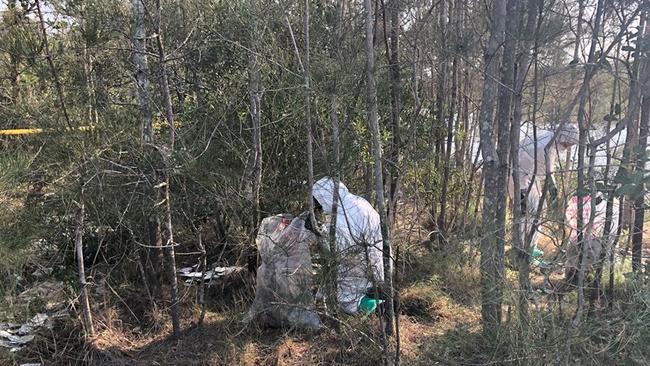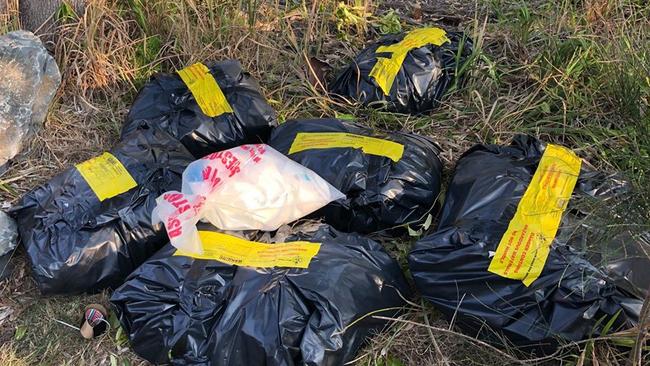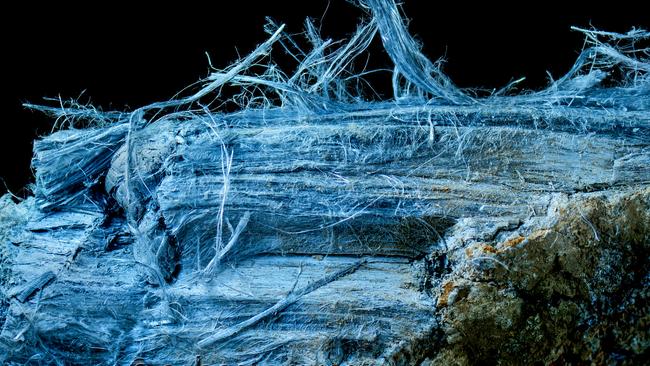Asbestos dumping: Hazmat crews find piles of dangerous sheeting at Wooyung, Stotts Island
Hazmat teams have donned protective gear to clean up dangerous material dumped by the side of the road and in bushland.
Gold Coast
Don't miss out on the headlines from Gold Coast. Followed categories will be added to My News.
HAZMAT teams have donned protective gear to clean up stacks of cancer-causing asbestos sheeting illegally dumped in the Tweed.
Fire and Rescue NSW crews from Tweed Heads Fire Station were alerted to two piles of asbestos last Friday, which had been illegally dumped at Stotts Island and Wooyung.

GET FULL DIGITAL ACCESS: $5 PER MONTH FOR THE FIRST 3 MONTHS
The Tweed Coast Road site at Wooyung – a hot spot for illegal dumping in the Tweed – contained about 150 kilograms of contaminated sheeting, reports the station.
Hazmat crews also dealt with a quantity of asbestos sheeting at the Stotts Island site, which was dumped by the side of the road.
The asbestos was sprayed with a solution and wrapped in plastic sheeting to be safely disposed of by contractors for Tweed Shire Council.

The station warned on Facebook that asbestos “can cause serious diseases” and the banned material “needs to be disposed of carefully to avoid presenting a problem”.
Breathing in asbestos fibres can cause lung cancer, mesothelioma and asbestosis and the risk increased with the number of fibres inhaled.
Asbestos was previously used in cement sheeting (fibro), drainage and flue pipes, roofing, guttering and flexible building boards.
It could also be found in brakes, clutches and gaskets and in the 1960s and 70s loose fibre asbestos was used as home roof insulation.
Rules for disposing of asbestos at the Stotts Creek Resource Recovery Centre include dampening asbestos to reduce dust and notifying weighbridge staff.

In May, Deputy Mayor Chris Cherry said the council was desperate to stop the perpetrators trashing the Tweed and naming and shaming was a consideration.
“These kinds of cowboys that are dumping illegally, they’re putting others at risk,” she said.
Report illegal rubbish dumping by phoning the Department of Planning, Industry and Environment on 131 555 or the council on 1300 292 872.


